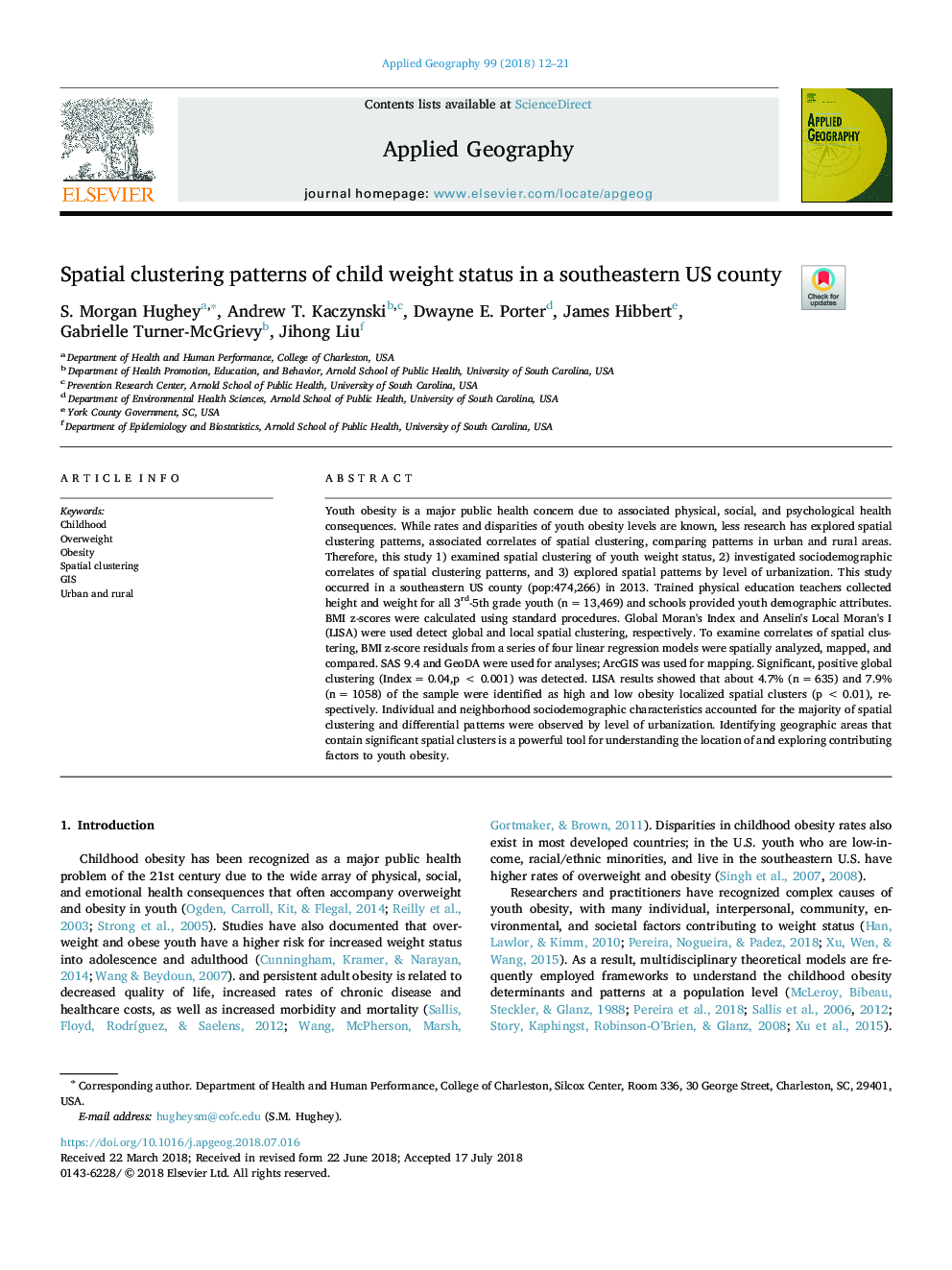| Article ID | Journal | Published Year | Pages | File Type |
|---|---|---|---|---|
| 6538195 | Applied Geography | 2018 | 10 Pages |
Abstract
Youth obesity is a major public health concern due to associated physical, social, and psychological health consequences. While rates and disparities of youth obesity levels are known, less research has explored spatial clustering patterns, associated correlates of spatial clustering, comparing patterns in urban and rural areas. Therefore, this study 1) examined spatial clustering of youth weight status, 2) investigated sociodemographic correlates of spatial clustering patterns, and 3) explored spatial patterns by level of urbanization. This study occurred in a southeastern US county (pop:474,266) in 2013. Trained physical education teachers collected height and weight for all 3rd-5th grade youth (nâ¯=â¯13,469) and schools provided youth demographic attributes. BMI z-scores were calculated using standard procedures. Global Moran's Index and Anselin's Local Moran's I (LISA) were used detect global and local spatial clustering, respectively. To examine correlates of spatial clustering, BMI z-score residuals from a series of four linear regression models were spatially analyzed, mapped, and compared. SAS 9.4 and GeoDA were used for analyses; ArcGIS was used for mapping. Significant, positive global clustering (Indexâ¯=â¯0.04,pâ¯<â¯0.001) was detected. LISA results showed that about 4.7% (nâ¯=â¯635) and 7.9% (nâ¯=â¯1058) of the sample were identified as high and low obesity localized spatial clusters (pâ¯<â¯0.01), respectively. Individual and neighborhood sociodemographic characteristics accounted for the majority of spatial clustering and differential patterns were observed by level of urbanization. Identifying geographic areas that contain significant spatial clusters is a powerful tool for understanding the location of and exploring contributing factors to youth obesity.
Related Topics
Life Sciences
Agricultural and Biological Sciences
Forestry
Authors
S. Morgan Hughey, Andrew T. Kaczynski, Dwayne E. Porter, James Hibbert, Gabrielle Turner-McGrievy, Jihong Liu,
